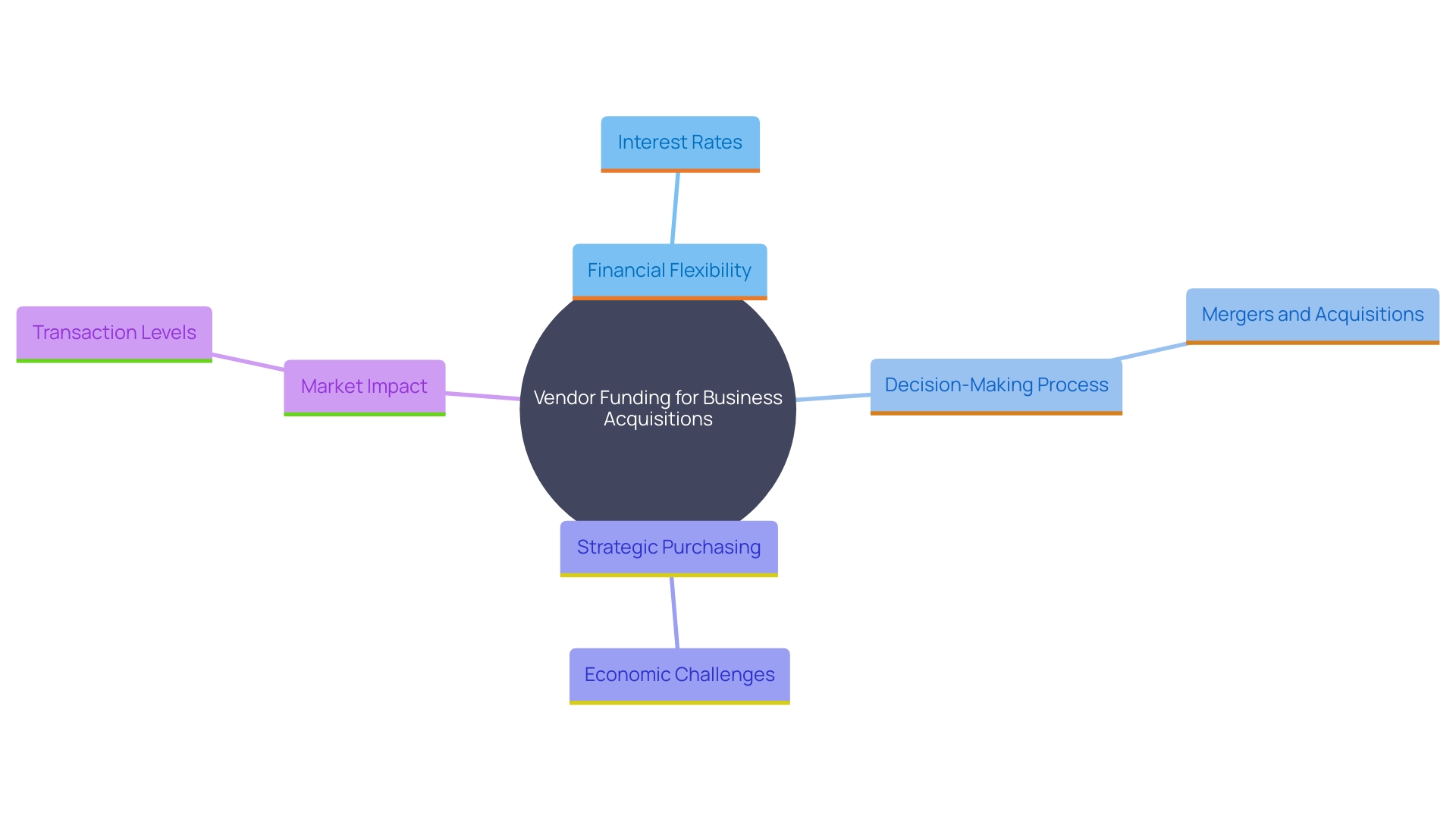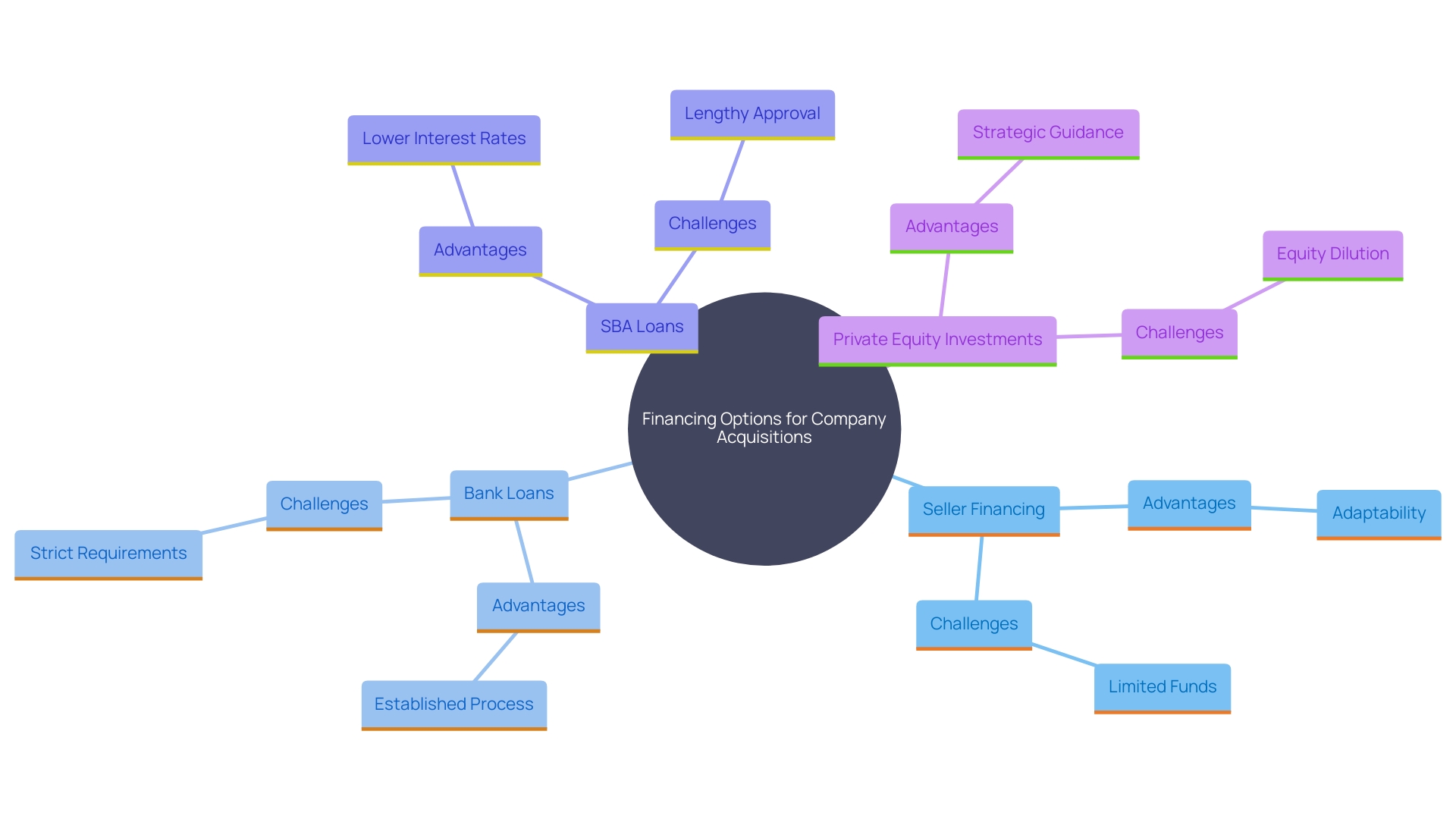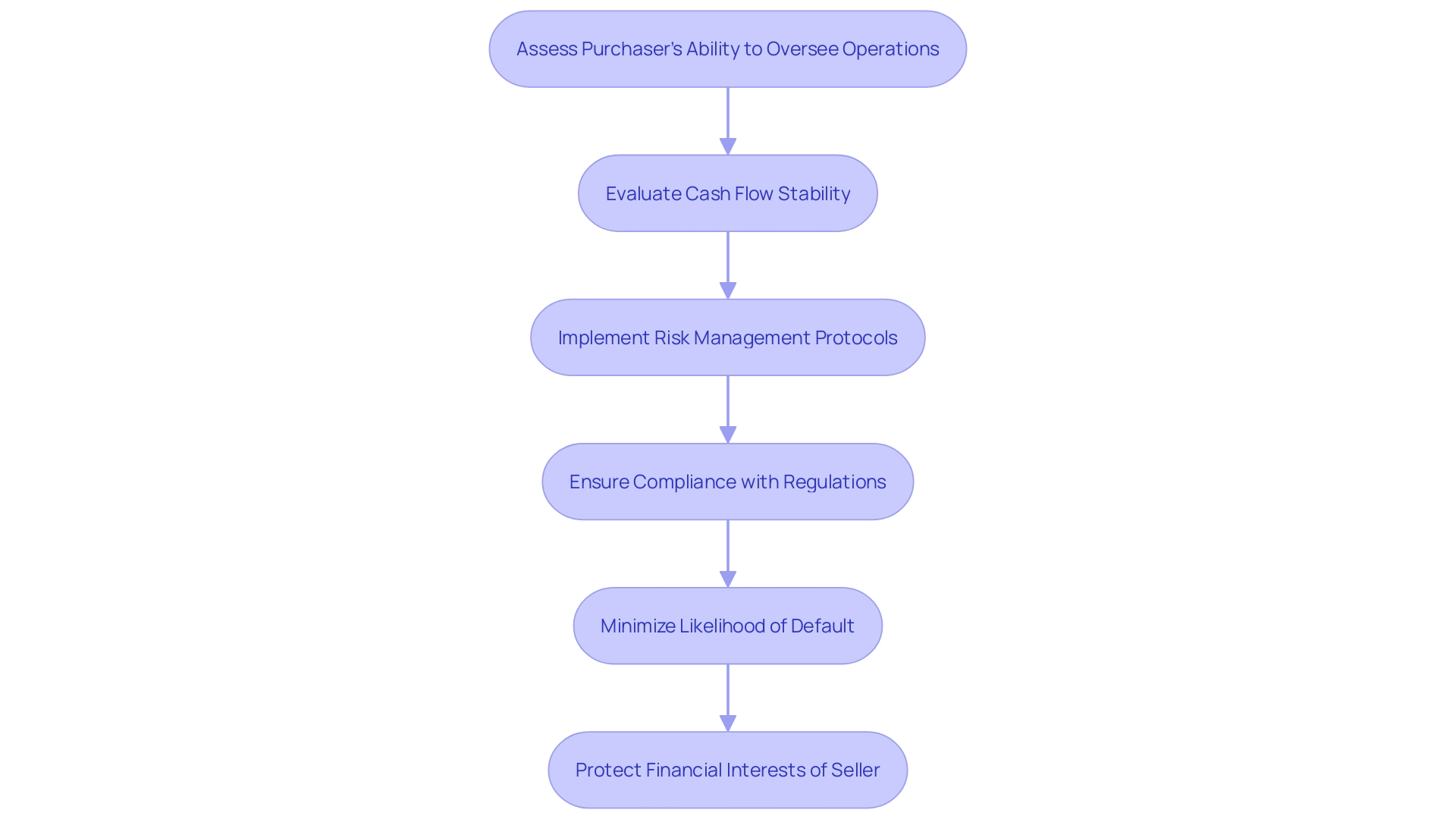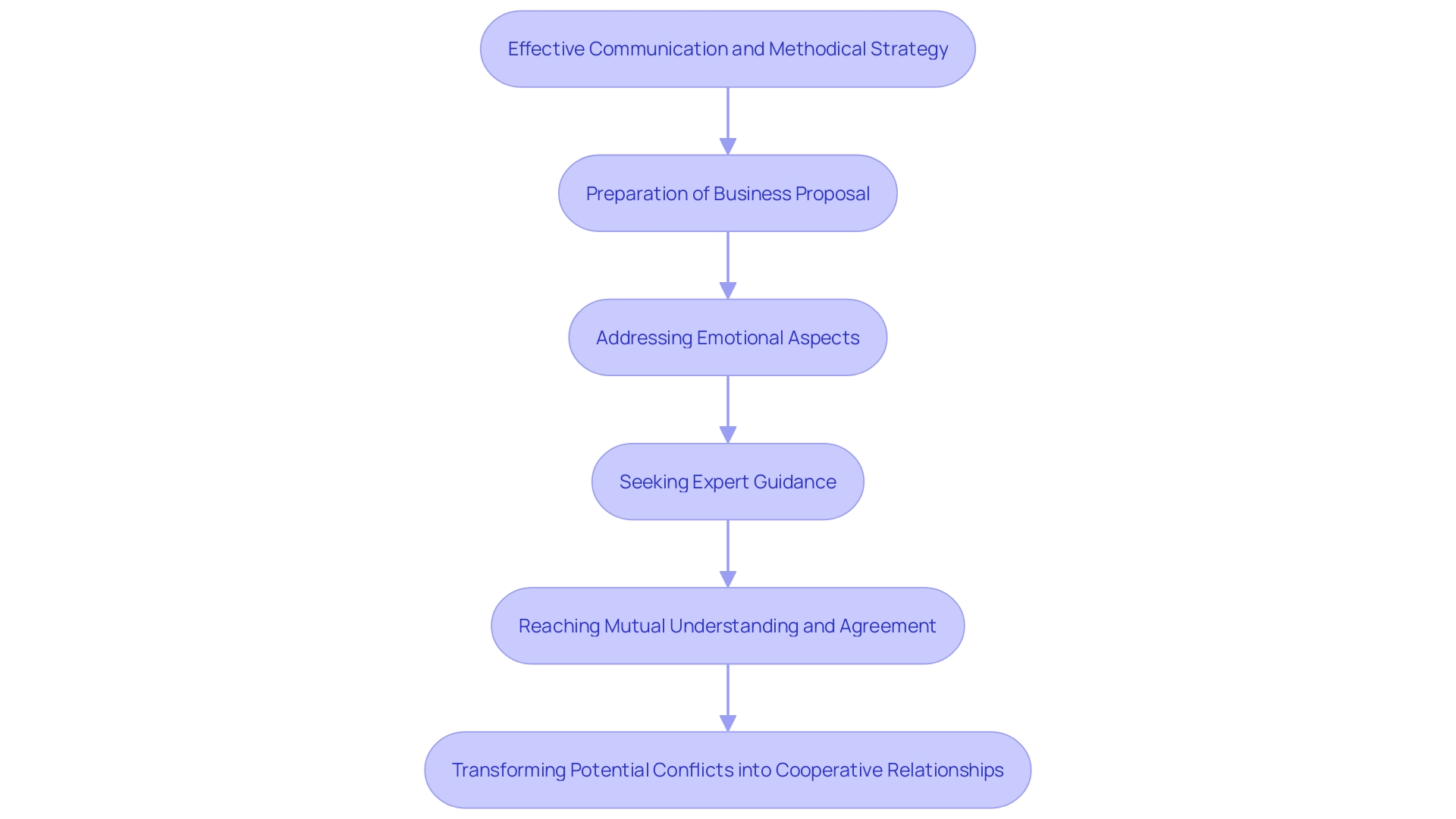Introduction
In a changing economy environment where the business world is always, in flux and full of challenges to overcome when it comes to obtaining ownership of a company through traditional financial channels Seller financing stands out as a ray of optimism providing a versatile and advantageous option that streamlines the process of acquiring a business This approach permits purchasers to spread out their payments over an extended period while the seller assumes the role of a financier bypassing the strict criteria typically linked with traditional bank funding
Amid changes in interest rates and economic uncertainties Seller financing is gaining appeal as an option for buyers and sellers alike amidst fluctuating interest rates and economic uncertainties Seller financing offers a smoother transaction process and enables strategic acquisitions even in turbulent times Insights from professionals in the field and recent research emphasize the increasing preference, for this financing method underscoring its ability to uphold transaction volumes and stabilize valuations especially within the lower middle market segment
This article explores how seller financing works in detail by discussing its elements and advantages as well as any disadvantages for buyers and sellers alike. It also looks into ways of financing and offers useful advice, on how to negotiate deals involving seller financing. By grasping the nuances of seller financing entrepreneurs looking to enter the business world or small business owners can tackle the challenges of acquiring a business with assurance and prosperity.
What is Seller Financing for a Business?
Obtaining an enterprise through vendor funding entails a plan where the purchaser is permitted to make payments gradually rather than an advance payment from the vendor. This not only eases the transfer of ownership but also provides financial adaptability to both entities involved. The vendor operates as the lender by consenting to a note from the purchaser. In return, the purchaser commits to repaying the loan amount plus interest, over a specified duration. 'This funding choice may be quite appealing in today's context because it avoids the usual obstacles associated with acquiring traditional bank loans for small enterprises and aspiring entrepreneurs due to perceived risks.'.
The idea of vendor support is gaining traction due to the nature of interest rates and economic volatility. Sources like the BCG’s M&A Sentiment Index indicate that the decision-making process for mergers and acquisitions heavily depends on elements such as access to capital and interest rate changes. When interest rates remain stable or decline, it fosters an environment for transactions, making it beneficial for both parties involved in a vendor-supported arrangement.
Furthermore when facing economic challenges there are chances for making strategic purchases. According to insights from Doug Bend at Bend Law Group, the essential element for an acquisition lies in comprehending the worth and cost you are ready to agree upon for your company. This clear understanding aids in simplifying the process and preventing any setbacks and expenses. Additionally, having the choice of vendor support can assist purchasers in navigating the complexities of obtaining authorization for a loan to acquire a business.
In actual world situations, vendor support contributes to maintaining transaction levels, especially in the lower middle market segment, even during rising interest rates. Smaller deals necessitate funding compared to larger ones thus helping to maintain stable valuations. As observed by Alan Zoccolillo of Baker McKenzie the existing regulatory landscape contributes to transaction intricacies and delays. Seller support serves as a means to alleviate some of these hurdles by providing a simpler and adaptable alternative.
Ultimately, vendor support appears as an intelligent option for individuals looking to purchase or sell a business providing a mutually advantageous solution in a constantly evolving market.

How Seller Financing Works
In a financing arrangement involving a vendor and a purchaser, both parties collaborate to establish terms such as the loan amount, interest rate, repayment schedule, and any collateral required. Once they reach an agreement, the purchaser makes payments to the provider until the loan is completely settled. The seller maintains a security interest in the enterprise to protect against default. This funding option is particularly advantageous when traditional bank loans are challenging for small or new enterprises to obtain. A recent report by Fiserv indicates that small enterprises have demonstrated resilience and a strong interest in monetary support options during economic shifts. Seller funding provides a solution by addressing the gap left by conventional funding methods and enabling both parties to progress with confidence.

Key Components of Seller Financing
'Seller-supported arrangements include significant elements such as the purchase amount and initial payment, along with the interest rate and loan term duration, in addition to potential conditions based on the purchaser's performance and default criteria being satisfied or unsatisfied as required for both parties engaged to create a transparent and beneficial comprehension of the contract at hand, which can offer monetary adaptability, particularly advantageous in competitive markets.'. For example, a vendor may accept a payment and loan duration that aligns with the purchaser's ability to pay in order to facilitate a smoother transaction process.. This arrangement can also benefit both sides by assisting vendors in attracting prospective clients through advantageous conditions. A comprehensive understanding of these elements allows purchasers and vendors to participate in discussions using vendor support to achieve their monetary goals and finalize a successful deal..
Pros and Cons of Seller Financing for Buyers
'Vendor support offers an advantage because of its adaptable characteristics and is an appealing option for purchasers who might encounter difficulties in securing conventional loans from banks due to their stringent approval processes and credit history stipulations, in contrast to vendor support which is typically more accessible. This can be particularly beneficial for buyers with credit backgrounds or limited financial resources.'. 'According to a study carried out with 64 banks and 20 U.S. branches of foreign banks, it has become more challenging for small and medium-sized companies to obtain traditional loans due to strict lending criteria and elevated interest rates.'.
Furthermore, financing from the owner can help speed up the process of buying a business since it usually comes with less red tape than bank loans do. However buyers should be cautious about risks involved. For instance, interest rates on financed transactions may be higher than those from banks, potentially increasing the acquisition cost. Furthermore, carrying out research is essential to confirm that the provider has supplied precise financial details regarding the enterprise. It's important because the rise in interest rates has brought attention to M&A deals which could result in higher due diligence costs and influence valuations.
Despite the high interest rate environment there is still a significant interest in finding good deals of high quality transactions. Financial analysts point out that the lower middle market segment is experiencing growth and offering numerous prospects for strategic acquisitions. To conclude, while vendor support can be an alternative, for traditional loans purchasers need to carefully evaluate risks and capitalize on its adaptable characteristics.

Pros and Cons of Seller Financing for Sellers
One advantage of vendor support is its capacity to draw in prospective purchasers who might face difficulties with traditional funding methods. This increased interest from clients could lead to transactions and possibly elevated selling prices. Furthermore, vendors can benefit from a revenue stream, from interest payments. However, it is essential to consider the risk of client default as it could lead to financial difficulties and the complex process of reclaiming ownership of the enterprise.
'Seller financing is often likened to a 'rent to buy' situation where sellers act as lenders by allowing purchasers to pay in installments rather than a single payment upfront.'. This method has become popular in markets with interest rates and limited inventory as it provides an appealing choice for a lot of people. For example In Ruskin, Florida a homeowner proposed a rent, to buy agreement highlighting the flexibility and potential cost savings for buyers.
Sellers should have a grasp of the financial environment and the possible risks it carries with it. The latest findings from the 2022 Small Enterprise Credit Survey indicate that over half of organizations, with employees, resorted to funds when facing financial obstacles; underscoring the importance of thorough financial strategizing. Furthermore, given the interest rates established by the IRS for the third quarter of 2024, individuals can more accurately project their financial gains from interest payments.
Ultimately, vendor funding is a method for assisting company acquisitions by offering benefits such as quicker transactions and ongoing income streams. However, one must also be mindful of the risks involved with purchaser defaults.
Alternatives to Seller Financing
When considering financing for a company acquisition there are options available aside from seller financing such as bank loans from traditional institutions like the Small Business Administration (SBA) as well as private equity investments to explore different avenues to secure funding that align with their specific needs and circumstances.
Numerous purchasers tend to choose bank loans as their initial preference when seeking financial support since they offer a substantial amount of money to be repaid over an extended period of time. 'However, obtaining these loans could pose a challenge for small enterprises and inexperienced entrepreneurs due to banks' concerns regarding potential risks involved.'.
'Recently there have been updates to SBA loans making them more adaptable for buyers wanting to fund an investment of acquiring 100 percent ownership outright which benefits both purchasers and vendors by allowing for easier funding and enabling sellers to stay involved, in the venture as advisors or shareholders; though understanding the specifics of these loans may be challenging given that only a handful of lenders are testing out these revised terms at present.'.
Private equity investments provide a path for financing ventures as they offer more than just financial support. They also bring valuable expertise and strategic guidance to the forefront of operations targeting enterprises with promising growth prospects that might not meet the criteria, for conventional bank financing.
Interest rates are vital in molding the environment as well; they have significantly affected the ease of borrowing funds over the last fifteen years and have contributed to heightened investments. The choice of the Federal Reserve to maintain rates throughout the COVID 19 crisis resulted in a surge in mergers and acquisitions in 2021. Recent reports indicate that the IRS has confirmed that interest rates will stay stable for the quarter—a development of notable importance, for small businesses strategizing their finances.
It's crucial to understand these selections and the current market conditions to make an informed decision efficiently. If you are a purchaser, you need to weigh the benefits and drawbacks of each funding option to determine the most appropriate one for your particular circumstances.

Risks Involved in Seller Financing
Seller financing involves risks that need to be handled with care; one crucial issue is the potential for the purchaser to default on payments and cause substantial financial loss for the seller. Furthermore, if the purchaser has difficulty overseeing operations, it may lead to a reduction in the overall worth, which would adversely impact both parties concerned. 'In the growth phases of an enterprise journey as per the insights from the Office of the Comptroller of the Currency (OCC) borrowers frequently face challenges related to having stable cash flows and ample collateral to qualify for traditional loans which increases the likelihood of default occurrence.'. To tackle these challenges effectively and minimize risks linked to lending money in situations, individuals are advised to perform comprehensive inquiries to assess the capacity of the purchaser to operate successfully and repay the borrowed funds on time. The OCC underscores the significance of implementing risk management protocols and ensuring adherence, to relevant regulations to promote secure and prudent lending practices. Also worth noting is that elevated interest rates have the potential to inflate the capital expenses which could in turn diminish the company value and amplify costs associated with transactions for all involved parties involved in the deal making process 🌟 To overcome these obstacles successfully sellers must ascertain that buyers are sufficiently equipped to manage the day, to day operations of the business and fulfill their financial commitments effectively 💼

Tips for Negotiating Seller Financing
To successfully navigate seller financing discussions, effective communication and a methodical strategy are factors for both parties involved to reach a mutual understanding and agreement. Being open about roles and shared expectations is crucial for facilitating a smooth negotiation process between parties. Purchasers should submit a well-prepared business proposal that showcases their skills and dependability to earn the confidence of the vendor. Beyond numerical figures this negotiation process requires sensitivity towards the emotional aspects and unique perspectives of all individuals involved. Seeking guidance from financial experts is advisable to guarantee that the terms are equitable and compliant, with relevant regulations thus protecting the rights of both buyer and seller. This method has the potential to turn a confrontational deal into a cooperative relationship that lays the groundwork for a seamless transition and long term prosperity.

Conclusion
Seller financing is becoming increasingly important in the realm of business acquisitions as it provides an option for both buyers and sellers alike. It enables buyers to spread out their payments over a period of time which helps in easing the challenges related to conventional financing methods. This approach is particularly valuable, during economic times. Additionally the flexibility offered by seller financing not simplifies transactions but also opens up strategic growth possibilities, particularly within the lower middle market sector
Seller financing relies heavily on the elements such as loan terms and payment schedules to create a mutually beneficial deal between parties involved in a transaction. This financing option increases the chances of aspiring business owners realizing their dreams by making ownership more accessible; simultaneously expanding the scope of buyers, for sellers. However it is crucial for all parties to carefully manage risks associated with seller financing by conducting research and maintaining open communication during every step of the transaction process.
In the end the flexibility and attractiveness of seller financing have the potential to help business owners tackle obstacles and capitalize on chances in a changing market. By grasping the nuances of this funding approach and using bargaining tactics parties can set the stage for prosperous business deals that result in lasting success. Embracing the promise of seller financing can turn hurdles into prospects creating a business setting, for everyone involved.




